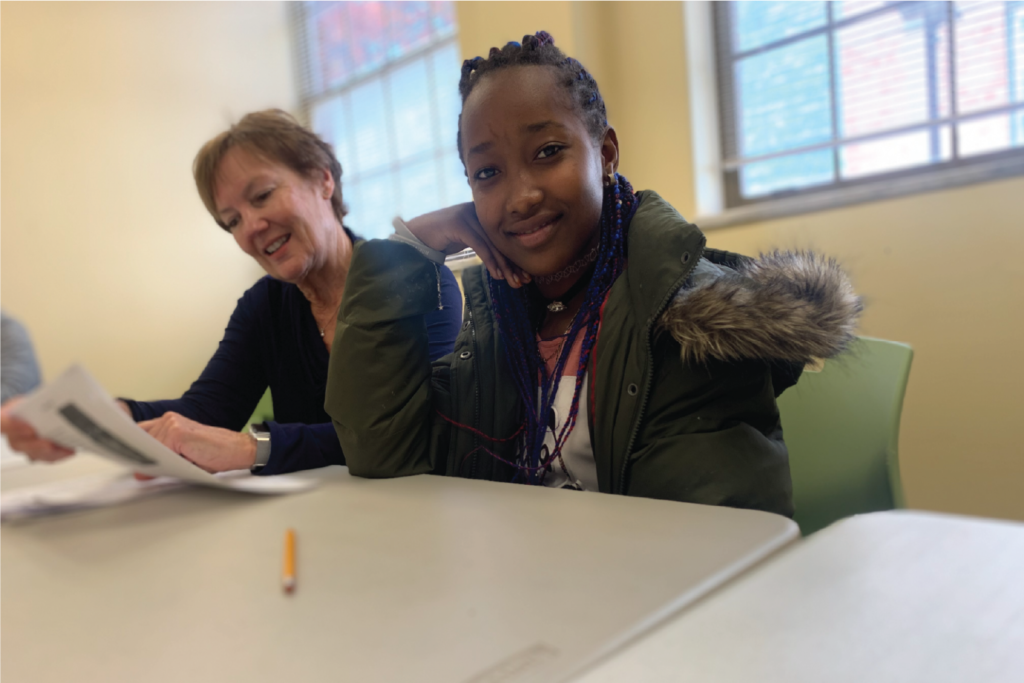Building a Bridge

by | July 23, 2020
In the past few weeks I have seen several articles describing the trend towards hiring private teachers and tutors and creating “pandemic pods” for teaching and learning for students in the coming school year. Wealthy parents with resources are actively seeking alternative ways of providing a strong education for their children while they continue to work. Articles in the Boston Globe, Washington Post, and Vanity Fair this week point out that this trend is spreading rapidly among the wealthy and that this approach to education mirrors the personalized tutoring and individualized instruction that royalty and the “ultrarich” have provided for their children for centuries.
As I reflect on how social crises, such as this pandemic and racial justice movement, amplify the inequities in our country, I am shaken by the ever-widening gap in our society and in our schools. As I think about our concerns at GVP over reopening and the continuance of a virtual school model, I am struck by the stark differences and huge divide between those with capital (material, economic, social, and cultural) and those without.
Sometimes these feel impossible to bridge. But then, I remember that this is EXACTLY what we are here for and what we are determined to do. GVP arose out of a recognition that schools and their systems and structures were inherently unequal for students. There is much research that shows how once schools and funding for schools became tied to political districts and to property taxes the differences between schools in “high rent’ and “low rent” districts grew. In turn this has led, at least in the US, to an even more highly segregated school system. These separations and clear distinctions among schools and school districts are based not only on the color of one’s skin but mostly on the wealth and capital one’s family possesses. For decades we have seen a clear trend towards a deeper and more distinct divide between rich and poor in our nation’s schools.
So, how was I caught by surprise when I read these articles? How did I not already anticipate this trend? I guess I was so deeply contemplating how to support our school and students, as well as my own daughters in public school that it never crossed my mind. I had not even thought about all of those people around me who would be interviewing private teachers and making plans to form their own pandemic private schools. Now, I am even more concerned about what this new and unprecedented time will bring. Further divides? Clearer distinctions? Deeper inequities in education? Fewer opportunities for those who cannot afford or cannot access private and personalized tutors? What will this time of interrupted education mean for all of the children in this country who cannot access alternatives?
GVP was created as a necessary alternative. For students coming from other countries with limited English and limited formal schooling and with histories of displacement and trauma, a traditional public school in a “low rent” neighborhood often could not provide the resources needed to bridge the gaps. GVP is that bridge. For more than a decade we have worked to create an intentional bridge connecting newcomer refugee young women and their families to the local community and to the education, resources, and capital they need in their new home. GVP’s four pillars (Intensive English, STEAM, SEL & Wellness, and Mentoring) reflect our deep awareness of and commitment to these things. We recognize that success is not found only in and through a strong education but in having access and opportunities to gain the knowledge and resources of the larger community. Our refugee students and families need strong positive relationships, connections, access, and opportunities to learn and to lead. GVP is dedicated to providing these.
In the days and weeks to come, our great challenge is figuring out how to ensure that our new virtual model for schooling at GVP will allow us to continue to do these things–to reinforce or reimagine the bridge we have built. The educational program staff and teaching faculty are working diligently together to creatively think of ways to keep the closeness and connections we have already and allow for continued opportunities to engage in community through virtual and online modes as well as in person. We are preparing for more, rather than fewer, home visits. We intend to wear our masks and make trips to see our students and families so that we can touch base, tutor, and support as needed even from the sidewalk or parking lot. We plan to continue weekly phone calls and increase our one-on-one conferences with students and parents. We will be making one or two deliveries each week with our buses, delivering food, technology tools, and educational materials. We know that we will hire more interpreters than ever before to be sure our students and families understand what is expected and how to use the tools and opportunities offered. There is still much to do and uncertain times ahead, but GVP is very familiar with new and with uncharted territories. We will continue to reflect, reimagine, and respond as needed.
“The most creative people are motivated by the grandest of problems that are presented before them.” – Neil deGrasse Tyson
“We should be creative, and we should accommodate the needs of every community to open up the democratic process. We should make it easy and accessible for every citizen to participate.” – John Lewis
“We need some creative tension; people crying out for the things they want.” – John Lewis
